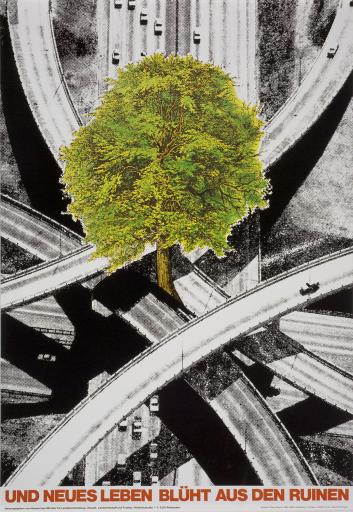Und neues Leben blüht aus den Ruinen (And new Life blossoms from the ruins), Klaus Staeck
Artwork Overview
Klaus Staeck, artist
born 1938
Und neues Leben blüht aus den Ruinen (And new Life blossoms from the ruins),
1979
Where object was made: Germany
Material/technique: offset lithograph
Dimensions:
Sheet/Paper Dimensions (Height x Width): 852 x 604 mm
Sheet/Paper Dimensions (Height x Width): 33 9/16 x 23 3/4 in
Mat Dimensions (Height x Width): 36 x 30 in
Sheet/Paper Dimensions (Height x Width): 852 x 604 mm
Sheet/Paper Dimensions (Height x Width): 33 9/16 x 23 3/4 in
Mat Dimensions (Height x Width): 36 x 30 in
Credit line: Anonymous gift
Accession number: 2009.0003
Not on display
If you wish to reproduce this image, please submit an image request





